It's hot, how many times should the baby take a bath a week?Different ages are particular
Author:Lilac mother Time:2022.06.17

Every mother knows that bathing to the baby is troublesome, especially now that it is hot.
How much is the most suitable temperature of bath water?
How hot is the temperature of the bathroom?
How many times a week is the best time?
Do I need a bathing product?
... ...
To sum up, just two words -tangled!
In fact, for babies of different skin states and different ages, bathing at different seasons still pays attention to.
We invited Yu Jia, a dermatologist to talk about the little thing of the baby's bathing.
Newborn (<28 days)
How should I take a bath?
The skin of the newborn baby is particularly delicate, and it is easy to cause skin problems such as tweezers and eczema due to the humid and sultry environment. Moms and dads need to take care of them more carefully.
1
Bath frequency
The skin's skin thickness is less than adults, sebum secretion is strong, and the self -metabolic ability is poor. It is necessary to clean the skin relatively frequently to avoid excessive oil accumulation on the surface of the skin and cause skin diseases such as seborrheic dermatitis and diapers.
Under normal circumstances, the first bath was taken 24 hours after the birth of the newborn, and then once or every other day every day.
Bathing in summer, if you are in a relatively hot southern area, you can take a bath every day. If you have a relatively dry environment in the north, you can take a bath the next day [1] [2].
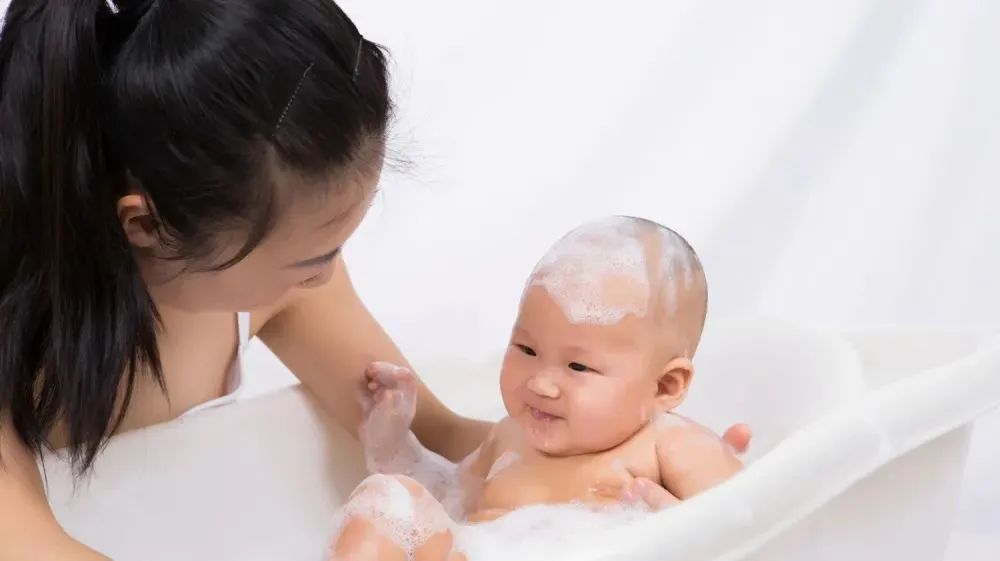
Image source: station Cool Hirolo
2
Bath temperature
Bathing for newborns, the recommended room temperature in most seasons is 26 to 28 ° C, and the recommended room temperature in summer is more appropriate. The water temperature is maintained at about 36-38 ° C. It is best to check the water temperature with the thermometer in advance to avoid the child's overheating Or scald [3] [4].
If the temperature of the bathing environment is high in summer, it is recommended to open the door to ventilate appropriately, or choose a room with a constant temperature of the air conditioner. Take a bath to take a bath for the child to prevent the child from taking a bath to cause heat stroke or tweezers.
3
Bathing method and time
Prepare all the supplies you need to use before and after bathing in advance, placed at the place where you can, you can ensure that there is always one hand to support your baby during the bath. Remember to wash your hands and take a bath for your baby.
Newborn can use a bath to take a bath. The amount of water can not pass the shoulder and keep the head and face higher than the water.
The order of bathing is from top to bottom, starting from the baby's face. Wipe around the eyes, nose, mouth, forehead, cheeks and chin with a wet towel. Be careful not to let the water enter the eyes and nose a lot.
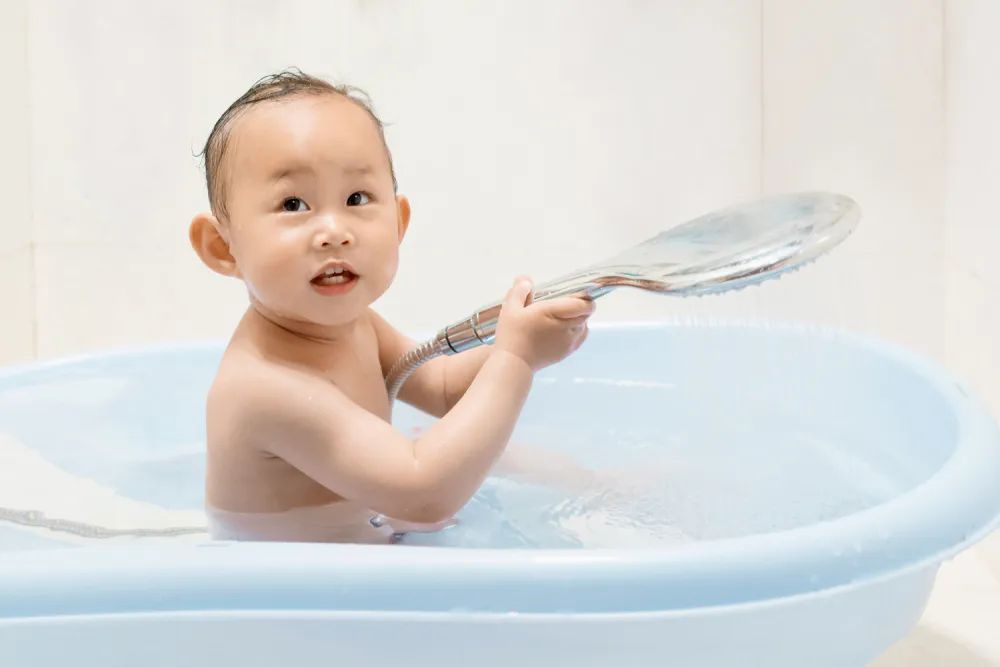
Image source: station Cool Hirolo
Then wash your hair. After holding the baby, hold it with your elbow, hold the neck with your hands, and wash your head with a newborn bath to avoid the bubble into the baby's eyes.
Wash your baby's body and arm next. Let the baby pillow on the front arm of the left, hold the baby's armpit of the baby's left hand, and hold the baby steadily. Wash your neck, armpits and arms first, do not leak the inner side of the baby's arms, behind the neck, fingers and toe seams. Then clean the chest and belly. Try to avoid around the umbilical cord and avoid water from the navel hole.
When cleaning the back, for safety, you can hug your baby face -to -face. Please help another person to clean it. If you want to take a bath alone, pay attention to stabilizing the baby, and hold your baby's armpit with your right hand, let the baby turn around and lie on the arm slightly to clean it to avoid the baby slipped into the water.
Finally, let the baby turn back and continue the left arm, wash your legs, thighs, perineum and hips. Pay attention to cleaning in place.
Parents should pay attention to all movements to stabilize their babies and support their necks and spines. In addition, cleaning should be gently and fast, and the time should not exceed 10 minutes. It is not recommended to scrub, pressing strong or scratching [5].
The scalp and the fetal fat do not need to be forcibly removed. As the skin is cleaned every day, this part of the fetal fat will gradually fall off. If the anti -slip effect of the bathtub is not ideal, you can immerse the towel in the bottom of the bath to prevent the baby from sliding too much.
If the baby's umbilical cord has not yet fallen off, you can stick to the waterproof umbilical adhesion in advance to pay attention to soaking the navel too much, or you can use the method of rubbing the bath before the umbilical cord falls off.
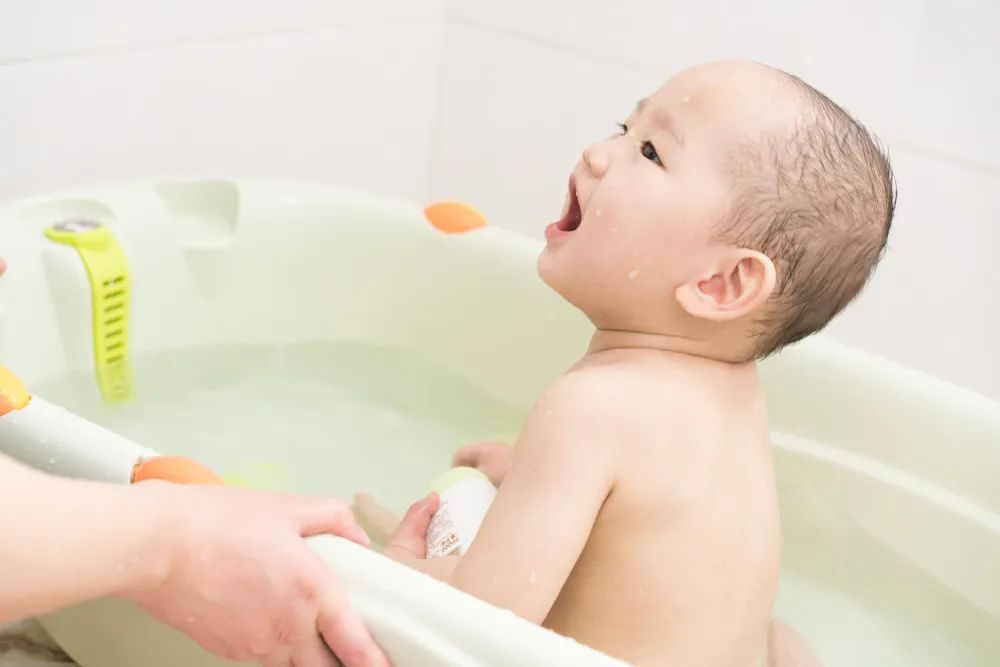
Image source: station Cool Hirolo
4
Bathing product use
If the newborn baby has obvious tinea or fetal residue, rub it properly when bathing and shampooing, and promote this part of the tinea shell to fall off. If the newborn baby does not have obvious tinea or fetal residues, it is only necessary to use 1 to 2 baby bath milk a week.
If the baby's head and facial oil secretion is particularly strong, and even have severiacoplastic dermatitis or cymbal seizures, you can also use baby bath products to clean the forehead, ear, and scalp. Wash your hair.
It is not recommended to be excessively removed on the head of the head. If there is a particularly thick shell that affects the growth of the head, you can usually wash your hair and clean it. You can apply baby oil for 3 to 5 minutes on the scalp before taking a bath. Remove.
5
Care after bathing
Newborn skin barrier function is relatively weak. After taking a shower for the baby, hold the baby on the paved bath towel. When drying the skin, the movement should be gently. After wrap the baby with a bath towel, carefully dry the root of the thighs and fart. , Elbow, etc. There is a position with skin wrinkles. After bathing, it is recommended to apply a baby -specific moisturizing agent immediately.
Some parents will massage with infant oil after taking a bath. In summer, if the child's skin is moist, you can temporarily replace a moisturizing product with baby oil. However, if the child's scalp, forehead, neck and limbs are more likely to sweat, it is not recommended to frequently apply oil in the body, and it is prone to aggravating seborrheic dermatitis.
Image source: station Cool Hirolo
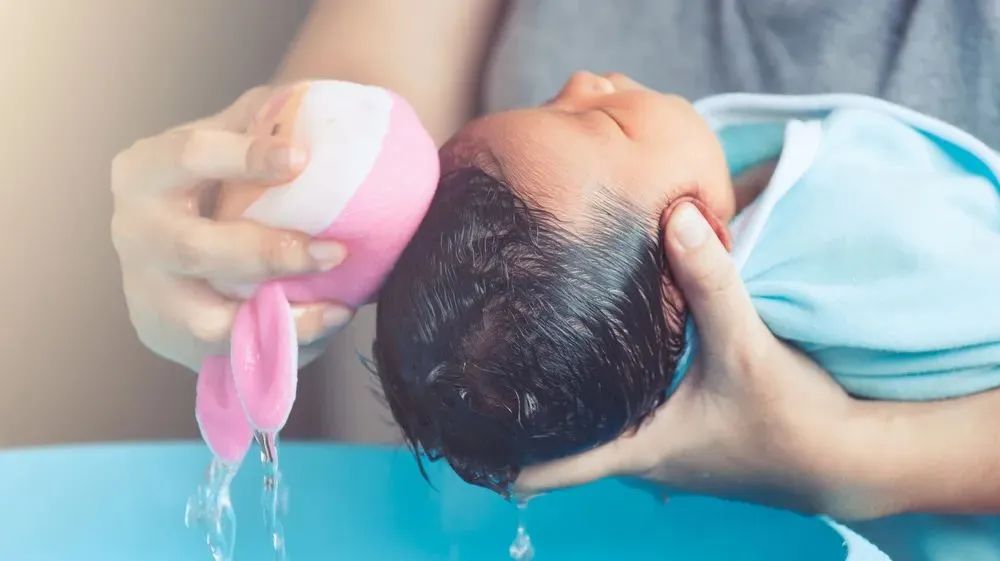
Infant (> 28 days)
How should I take a bath?
The baby's skin in the infant period is still very thin. It needs to grow through about a year to gradually improve the barrier function and approach the thickness of adult skin.
1
Bath frequency
Take a bath 2 to 3 times a week, but in the summer, you need to increase the frequency of bathing according to the local environment and children's skin moist.
If you are in a damp -heat environment in the south, you can take a bath every day. If the child sweats more and the skin is prone to sweat stains, it is recommended to clean it with 3 to 4 times a week.
The northern dry environment, but the baby with a large amount of activity and the humidity of the skin itself can also take the same care method. Only a few babies who are particularly dry and in the northern dry environment are recommended to take a bath every other day in summer.
Because each bathing will affect the balanced oil film balance on the surface of the child's skin, regardless of the south or north, it is recommended to apply a layer of moisturizing lotion for the baby after bathing.
Image source: station Cool Hirolo

2
Bath temperature
Babies in the infant period, bathing water temperature in summer is 34-36 ° C. It is not recommended to exceed 37 ° C. Similarly, parents recommend that temperature measurement in advance to avoid the baby's skin from too high water temperature [4].
The room temperature is controlled at 24 to 26 ° C. If the child has a summer swimming needs, the water temperature is recommended to control about 32 to 34 ° C.
3
Bathing method and time
When the baby does not climb, it is recommended to take a bath. The time is 5-10 minutes, and the steps are roughly the same as the newborn bath.
When the baby can stand alone, you can choose to start the shower, and it is best to not exceed 5 minutes. Generally, the shower is more hygienic than the pot.
Avoid using a bathroom seat, the baby is easily injured when you are unstable. When taking a bath, you should also let your baby stand close enough to help the baby from falling.
It can be cleaned directly with clean hands, which will be more appropriate than scrubbing with sponge or towels. Avoid rubbing hard and damage the skin barrier.
The order of cleaning from top to bottom, starting with the baby's face and shampooing, and then cleaning the body, arms, back, buttocks and legs to prevent the rinse or foam from being washed away before washing. Pay attention to washing in place with wrinkles in the baby's skin, such as behind the ears, behind the neck, the inside of the arms, the root of the thighs, the fingers, and the toe seam.
Pay attention to private care. Usually, when men and babies are cleaning the vulva, they need to pay attention to the penis and clean the scrotum. Female babies should pay attention to cleaning excessive secretions on the inside of the large labia.
If there are parents in special circumstances to leave the bathroom, be sure to take the baby away, even if the baby stays alone in the bathroom for a few seconds, it is not safe.
Image source: station Cool Hirolo
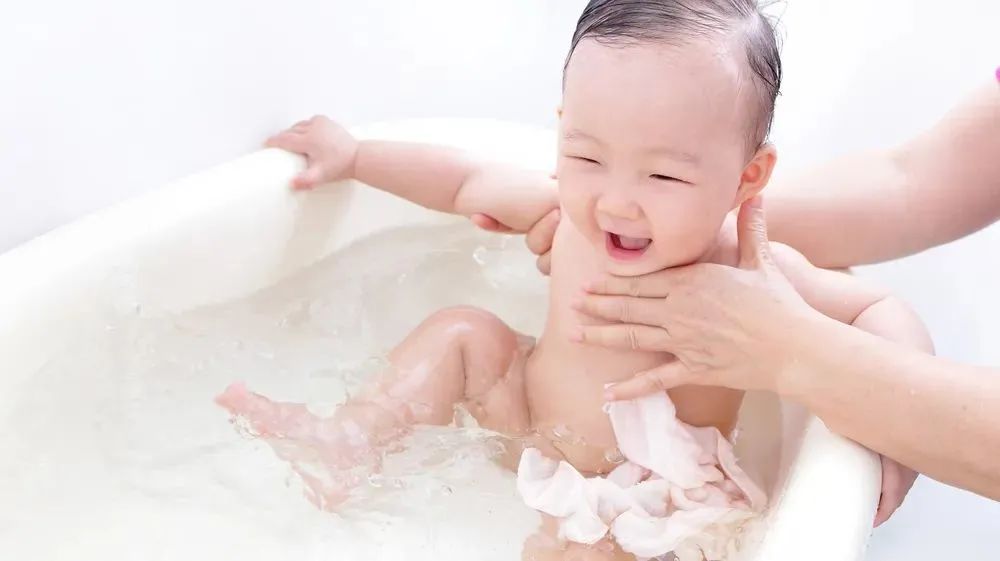
4
Bathing product use
It is recommended to choose a babies for bathing solution for the baby during the bath.
Ordinary soap can make the baby's skin dry. If you must use soap, you must also use a pH neutral infant -specific soap.
5
Care after bathing
After taking a bath, dry and dry it in time, especially pay attention to the skin wrinkles. After drying, apply the baby's dedicated skin moisturizing milk as soon as possible to avoid the baby's skin dry.
Image source: station Cool Hirolo
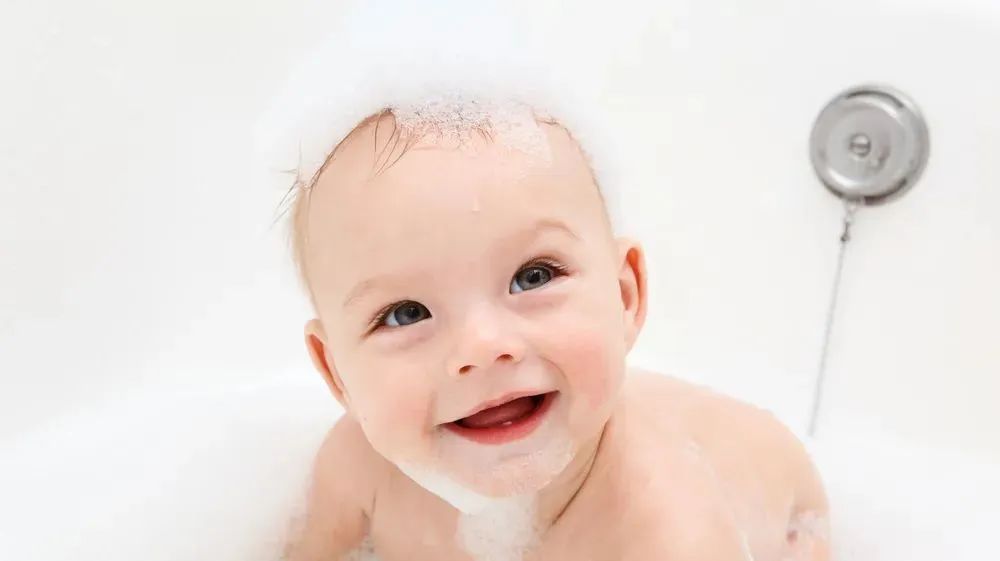
Baby of special skin
How to take a bath?
1
The baby with a long sister -in -law and flooding neck
The most common skin diseases in summer are tweezers (that is, heat rashes) and flooding neck and rash.
Such problems are usually increased by children with environmental heat stimulation. Some sweats can not be used through the skin to cause small rashes in the skin -tweezers, or skin wrinkles due to sweat friction. Flood the neck and rubber.
This kind of baby's daily care is to avoid heat stimulation and keep the local skin dry and cool. If necessary, you can use a glycry stone washing agent or zinc oxide ointment if necessary.
At the same time, pay attention to taking a bath every day. Be sure to ensure the rash area once a day, and use the baby bath product to cut the skin folds and clean it carefully. The small seeds with heat rashes can also be scrubbed gently with a towel to promote the small seeds as soon as possible. [ 6].
Image source: station Cool Hirolo
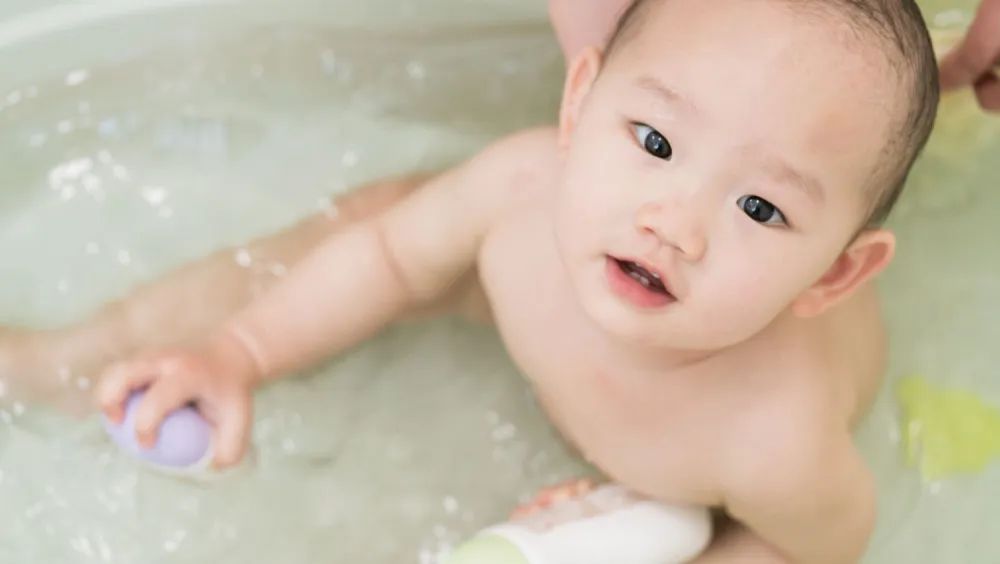
2
Eczema baby
The baby has eczema, mainly because the skin is moisturizing.
If the baby's eczema is mainly manifested in dry erythema, there is no flowing water, you can not wash it so frequently in the autumn and winter seasons, and take a bath twice a week.
In summer, because these babies usually need to apply moisturizing cream to increase skin moisturizing. Generally, apply moisturizing products every 3 to 4 hours. Usually, you can take a bath to take a bath every day. It is more appropriate to apply a moisture cream to the whole body immediately.
If the baby's eczema is flowing yellow water and scabs, it is recommended to take a bath at least once a day and clean the skin with a bath product the next day. Help the recovery of eczema.
Do not take the temperature of the bath water too hot, do not take more than 10 minutes of bathing, and apply moisturizing cream in time after bathing to avoid heavier eczema. Image source: station Cool Hirolo
3
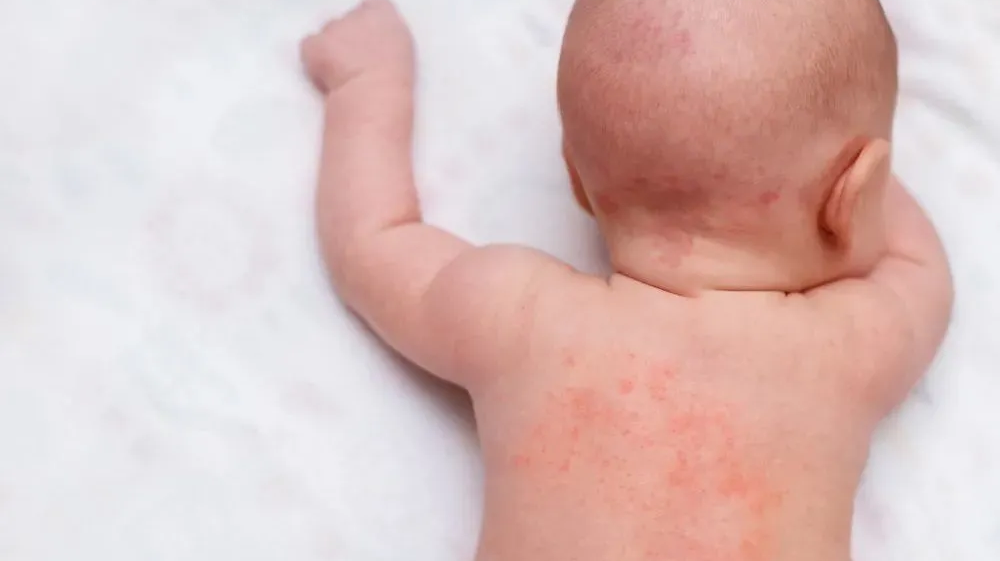
Red fart baby
Babies with red butt should pay attention to keeping the fart cleaning. Wash it in time with water when urinating. In addition to applying a moisturizing cream immediately, use 1-2 times zinc oxide ointment, or oxidation with oxidation per day Zinc's hip cream to strengthen local care.
If the female baby's vulva secretion increases, it should be cleaned in time when bathing to avoid excessive reproduction of bacteria or fungi in the local skin and aggravate red farts.
In short, taking a bath for your baby seems to be a small thing, but there are many details. In addition to the frequency, temperature, bathing time, etc., there is a special attention, that is -no matter at any time, do not leave your baby alone in the bathroom to avoid accidents!
You can take care of your baby to take care of 360 degrees.
references
[1] Mayo Clinic. Baby Bath BASICS: a Parent's Guide
[2] Ma Lin. Children's dermatology [M]. Beijing: People's Health Press, 2014.
[3] Chinese Maternal and Child Health Association Newborn Health Professional Committee. Principles of Newborn Skin Care Guidance (First Edition) [D]. Chinese Maternal and Child Health Association, 2015-7-22.
[4] The Development Working Committee of the Dermatologist Branch of the Chinese Medical Doctors Association.
[5] American Academy of Pediatrics. Aap Recoming on Bathing Your Baby.
[6] Bologna. Dermatology (simplified version) (Fourth Edition) [M]. Zhu Xuejun and other main translations. Beijing: Peking University Medical Press, 2019: 709-711.
Experts in this article
Yu Jia
Cooperative expert
The attending physician of Zhuozheng Medical Dermatics
Medical Beauty Clinician
Sui Jing
Review expert
Qianbei Medical Third Hospital Pediatrician Deputy Chief Physician
Plan
Produced: Lin Yiyi
- END -
Live Bandbading Graduate Graduate Study in Judging Employment
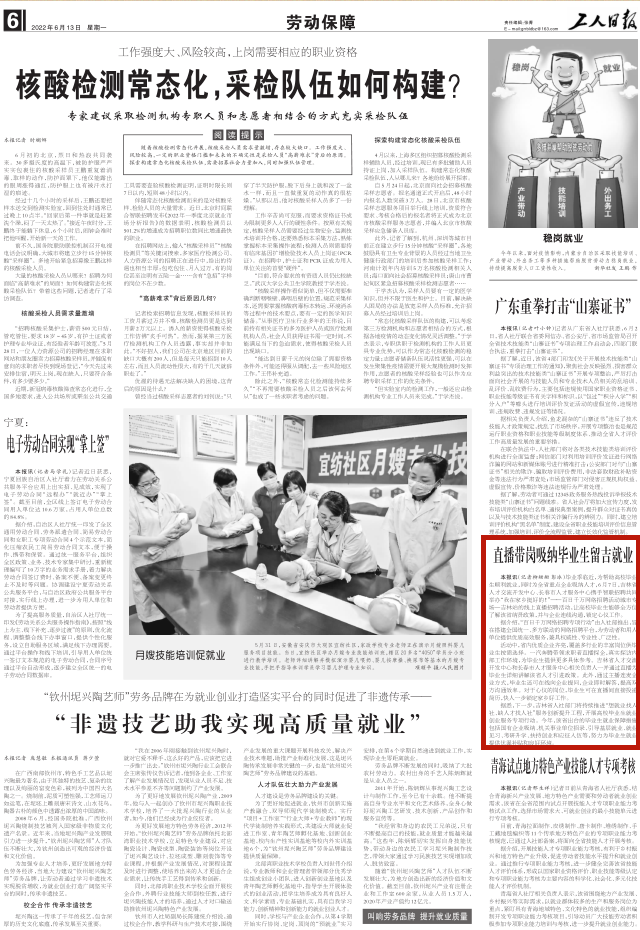
The graduation season is approaching. In order to help college graduates work smoo...
Further promote the in -depth development of the "four winds and eight regulations" investigation work
In order to accelerate the implementation of the company's requirements on the investigation of the four winds and eight regulations, and further promote the in -depth development of the work of mov...